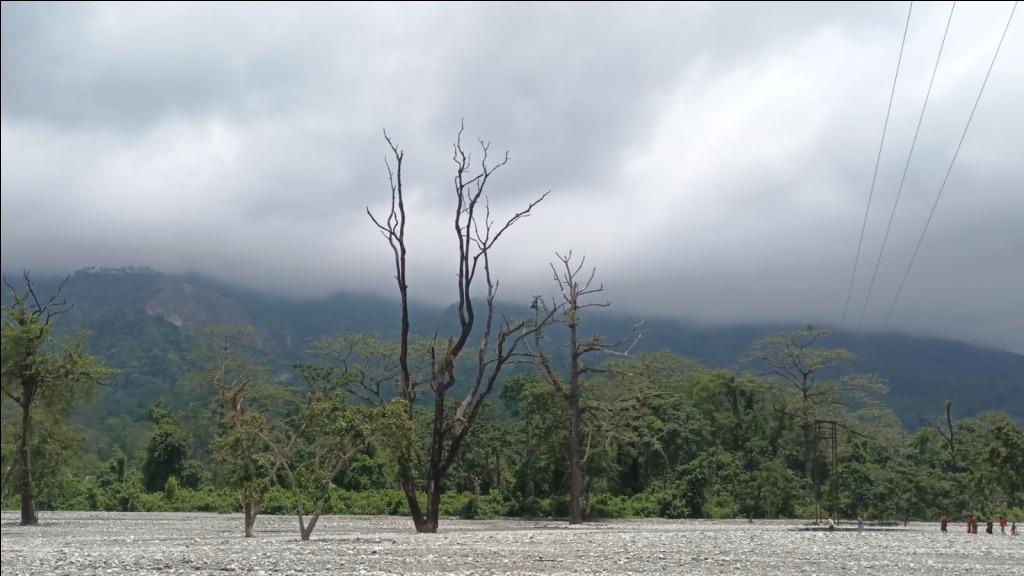In a significant move to strengthen flood preparedness and improve rainfall monitoring in the sensitive India-Bhutan border region, the India Meteorological Department (IMD) has installed rain gauges in 43 tea gardens across Jalpaiguri and Alipurduar districts of North Bengal. This expansion is part of a broader initiative that has increased the total number of rainfall monitoring stations in the region from 31 to 95.
The majority of the newly installed gauges—64 in total—have been strategically placed in tea estates near the foothills of Bhutan, a region vulnerable to flash floods and heavy monsoon rains. The expansion is crucial, as previous rainfall data from the border area was insufficient, creating major challenges in forecasting floods and issuing timely warnings.
Gopinath Raha, Meteorological Officer in charge of Sikkim and North Bengal, explained the importance of the new installations. “Earlier, we had no means to accurately track rainfall in areas along the India-Bhutan border. These new gauges in the tea gardens have filled that gap. This allows us to monitor weather patterns and rainfall trends more effectively,” he said.
Raha also noted that in addition to manual rain gauges, 20 automatic weather stations have been set up, with more under construction. These include installations at educational institutions like Mathabhanga College, Malbazar School, Banarhat School and Dhupguri College.
“We aim to cover more tea garden zones across North Bengal and Sikkim. So far, we’ve already installed gauges in around 50 gardens, and we’re already seeing the benefits,” he added.
Jalpaiguri District, previously had 44 rain gauge stations. Now, with the addition of 30 new gauges (all in tea gardens), the district boasts 74 monitoring stations. Alipurduar district previously had 23 gauges and mow, 13 additional gauges have been installed, also in tea gardens, bringing the total to 36. New gauges have also been deployed across Cooch Behar, Darjeeling and Kalimpong to further strengthen the region’s weather surveillance network.
India’s call for stronger coordination with Bhutan
The challenges posed by heavy upstream rainfall in Bhutan remain acute. Currently, India receives rainfall data from only four Bhutanese rain gauge stations—Tendru and Drokha on the Torsa River and Wangdi Phudrang and Dubani on the Sankosh River. These reports are relayed every three hours, often too late to issue effective early warnings during flash floods.
Krishnendu Bhowmik, chief engineer of the North East Division of the irrigation department, highlighted the persistent gap. “There are still no rain gauges on many of the rivers flowing from Bhutan. As a result, we’re often caught off-guard when river levels suddenly surge. However, the increase in rain gauges on our side will help us respond bette,” he explained.
Alipurduar MLA and chairman of the Public Accounts Committee, Suman Kanjilal, has repeatedly called for the formation of an Indo-Bhutan Joint River Commission, urging coordinated efforts between the two nations to mitigate annual flood damages.
“Every year, our people suffer due to floodwaters flowing in from Bhutan. I’ve raised the issue with chief minister Mamata Banerjee, who has directed the chief secretary to take it up in Delhi. We’ve also asked for rain gauges to be installed on Bhutan’s side of the border.”
Flood management during the 2024 monsoon
During the 2024 monsoon, the North East Division of the irrigation department had access to rainfall data from 70 stations—28 operated by the Central Water Commission, 30 by the IMD and 12 under the department itself. With the addition of the new gauges, officials expect faster data delivery and more accurate flood forecasting.
This large-scale upgrade of weather infrastructure in North Bengal marks a crucial step toward enhanced climate resilience in a region frequently battered by monsoon-driven disasters. If India’s proposal to Bhutan to increase gauge stations on its side is accepted, the move could usher in a new era of cross-border cooperation on hydrometeorological risk management.


